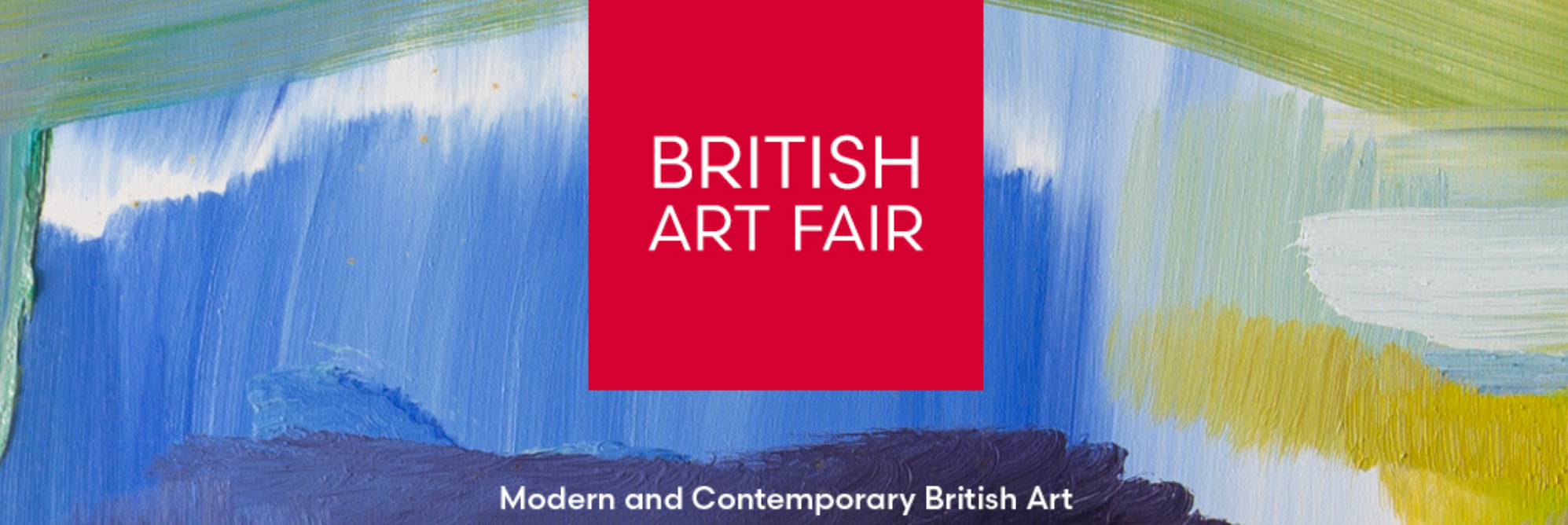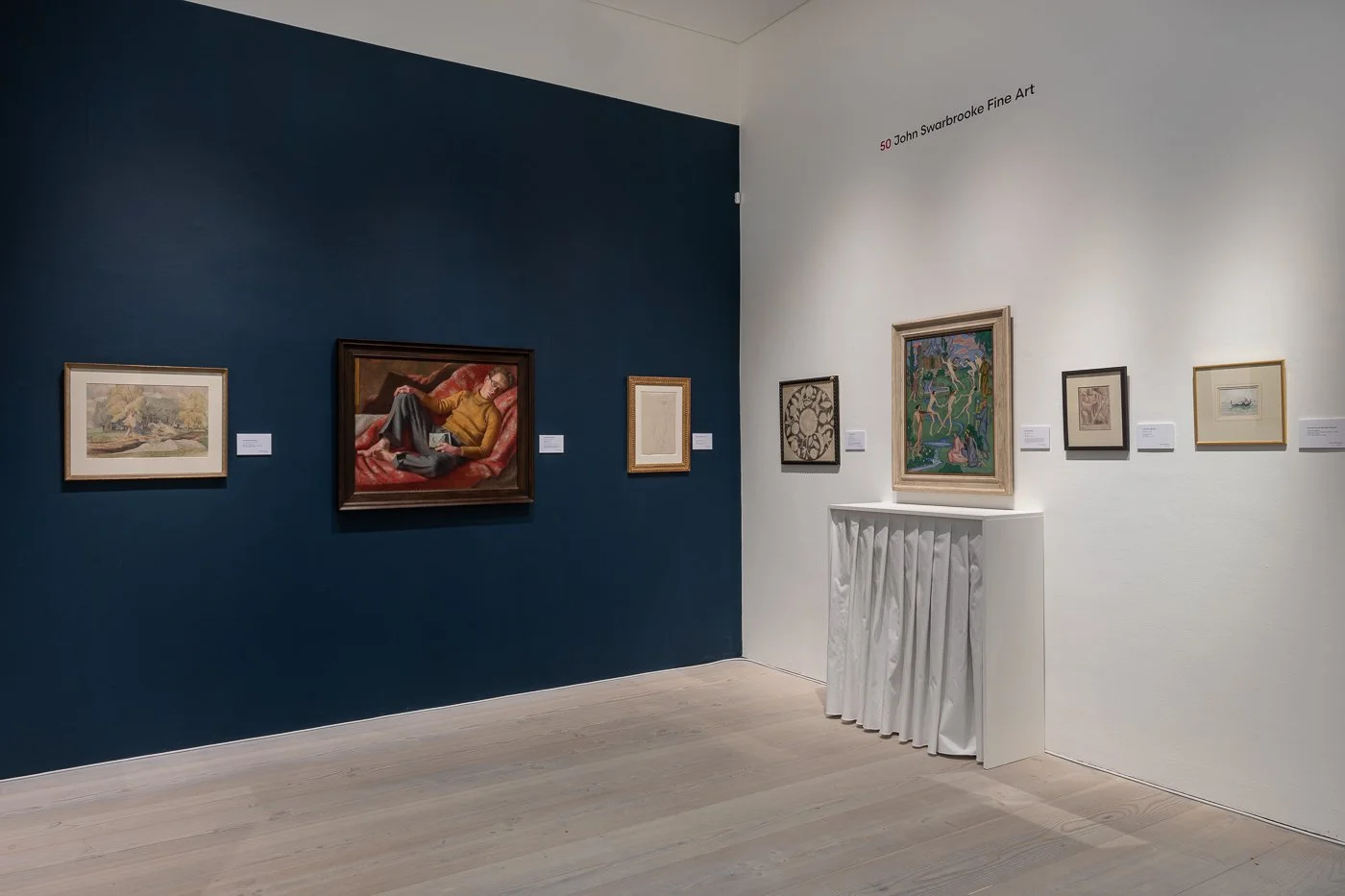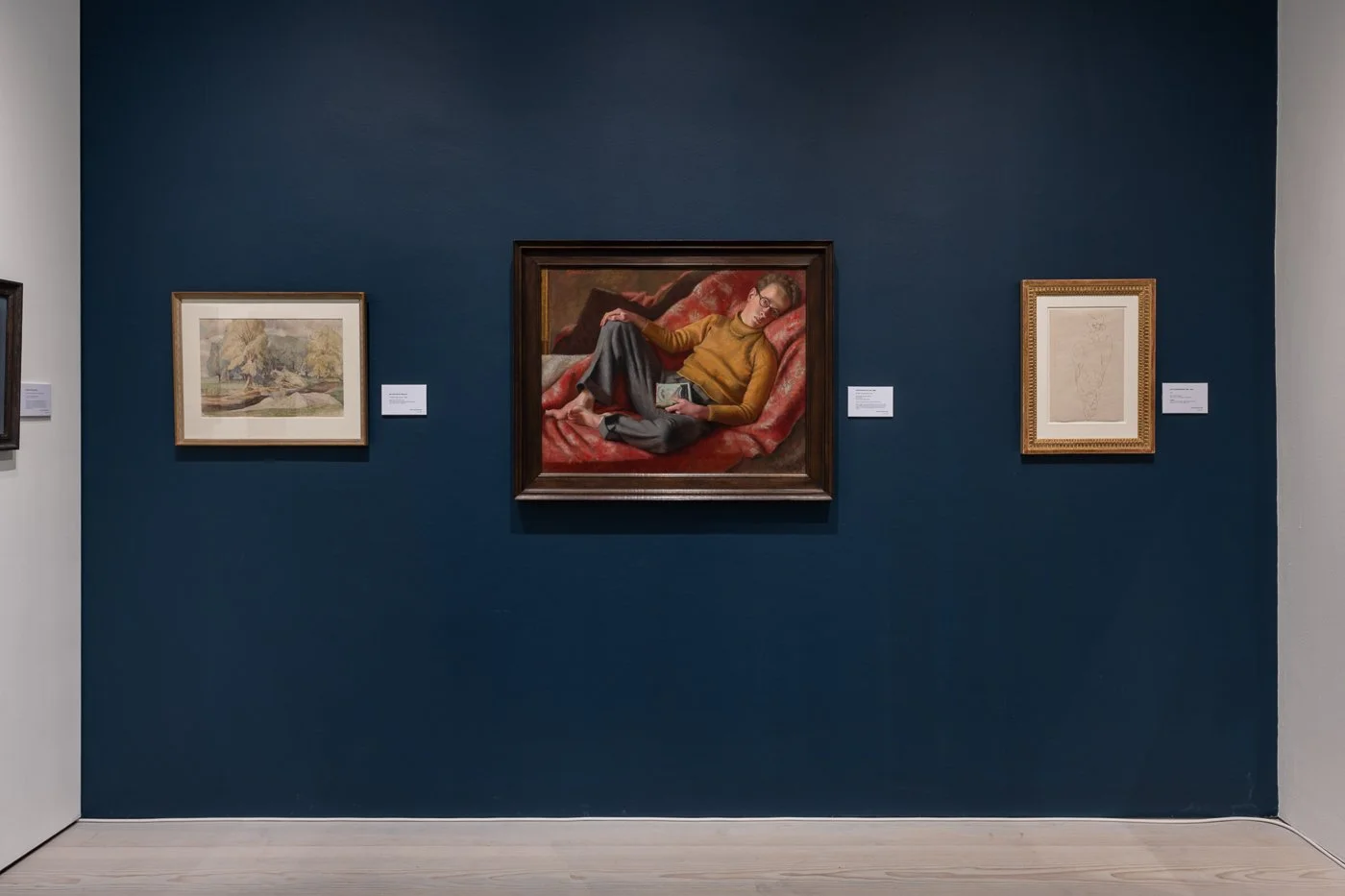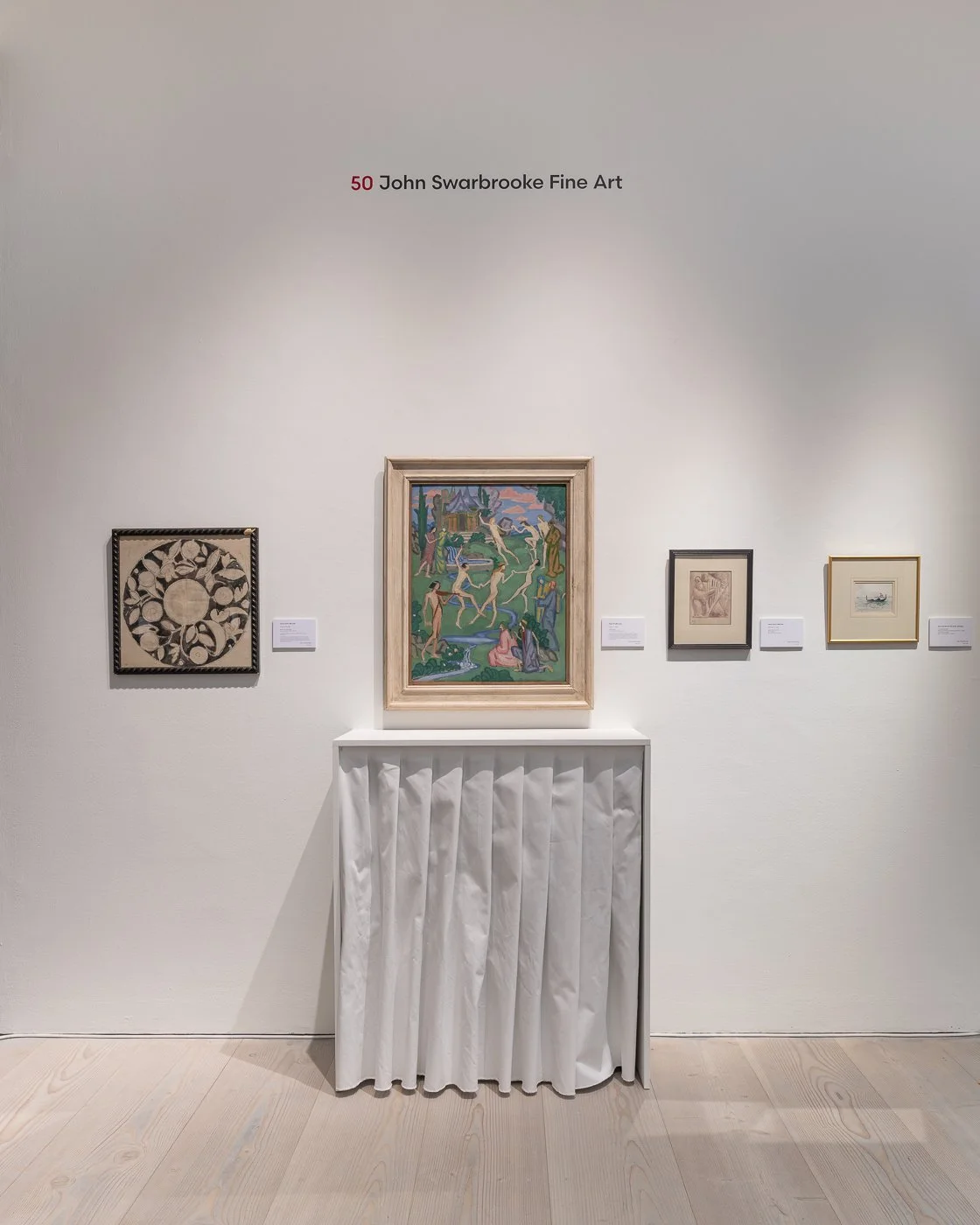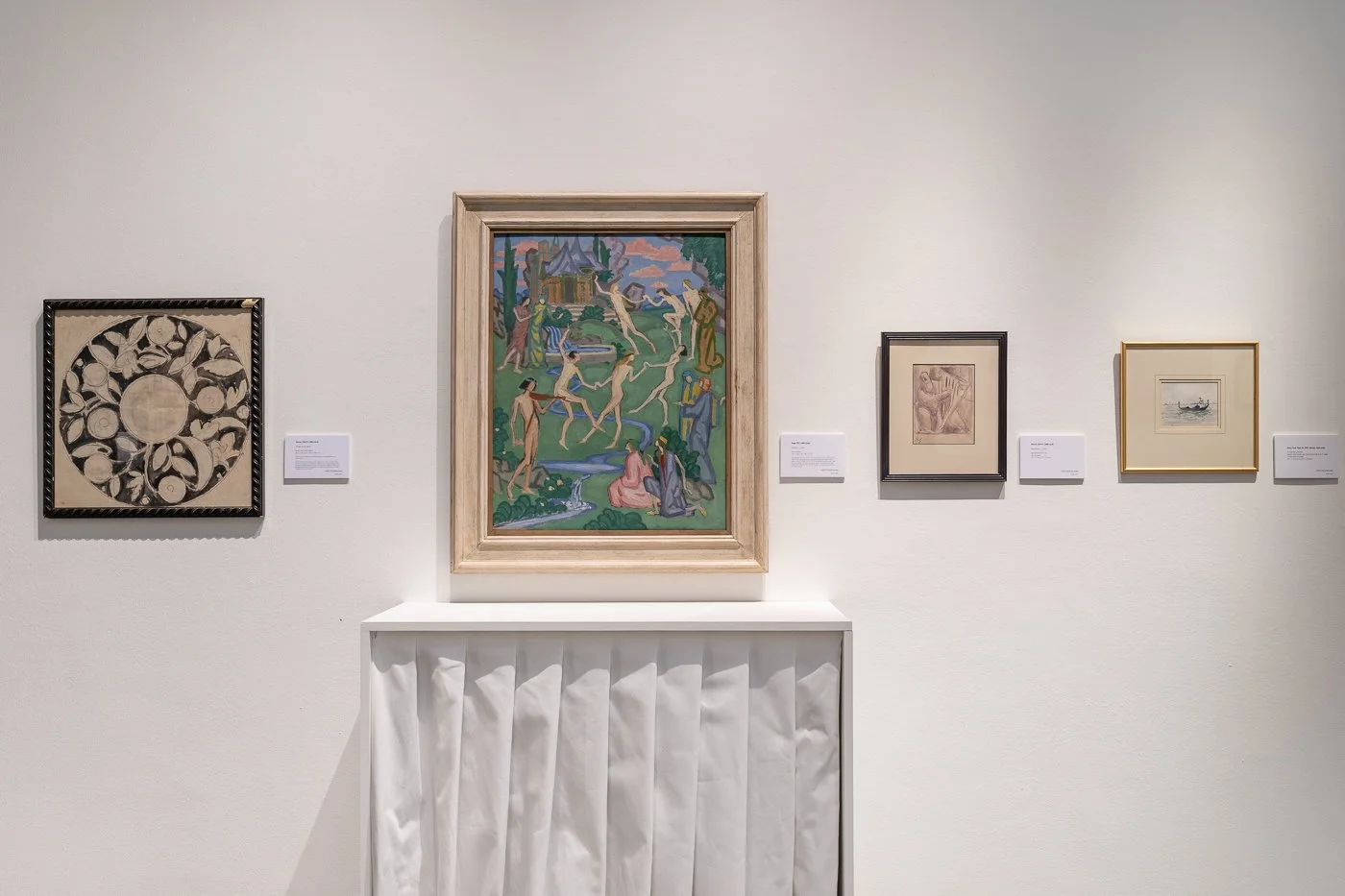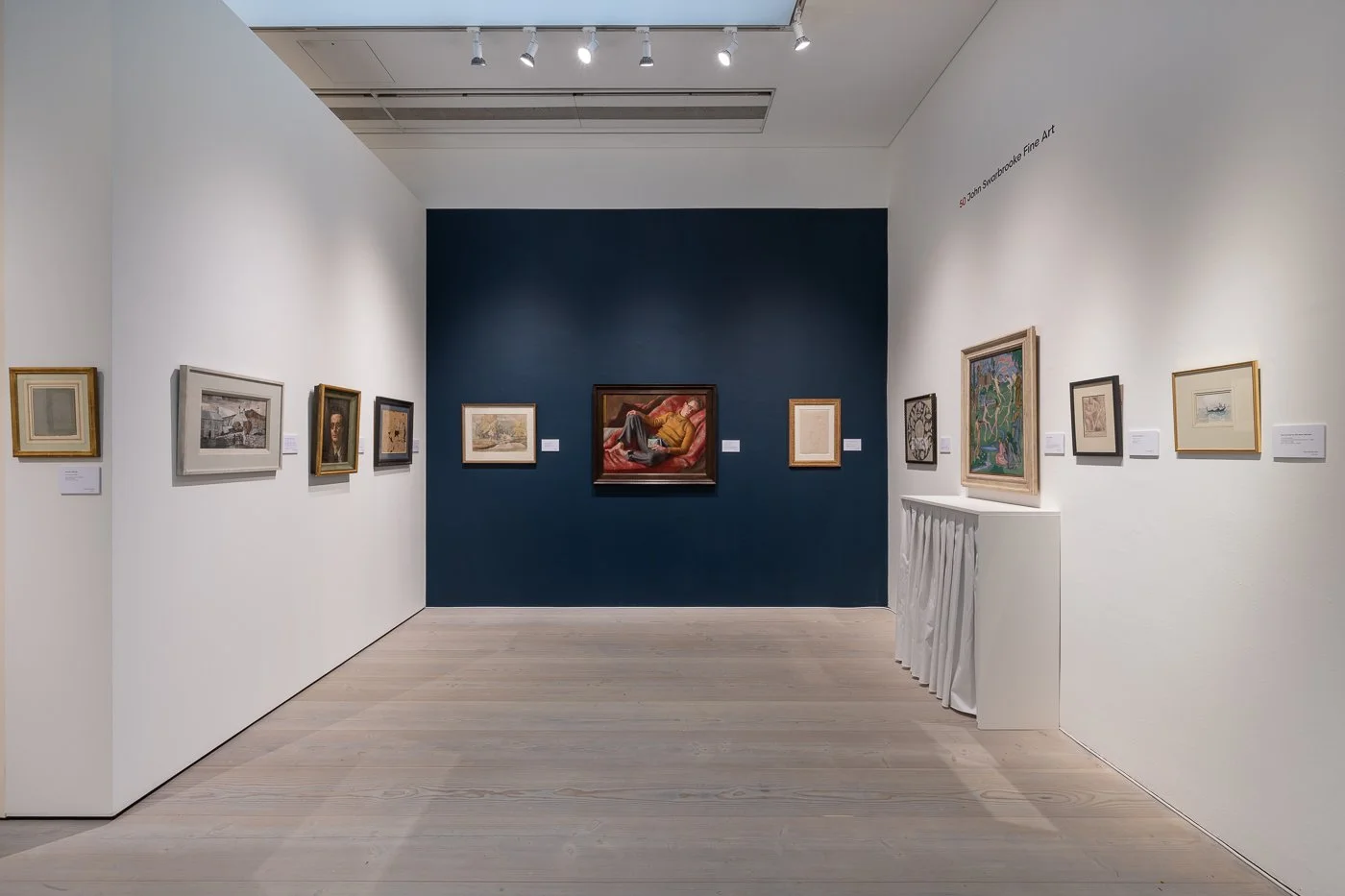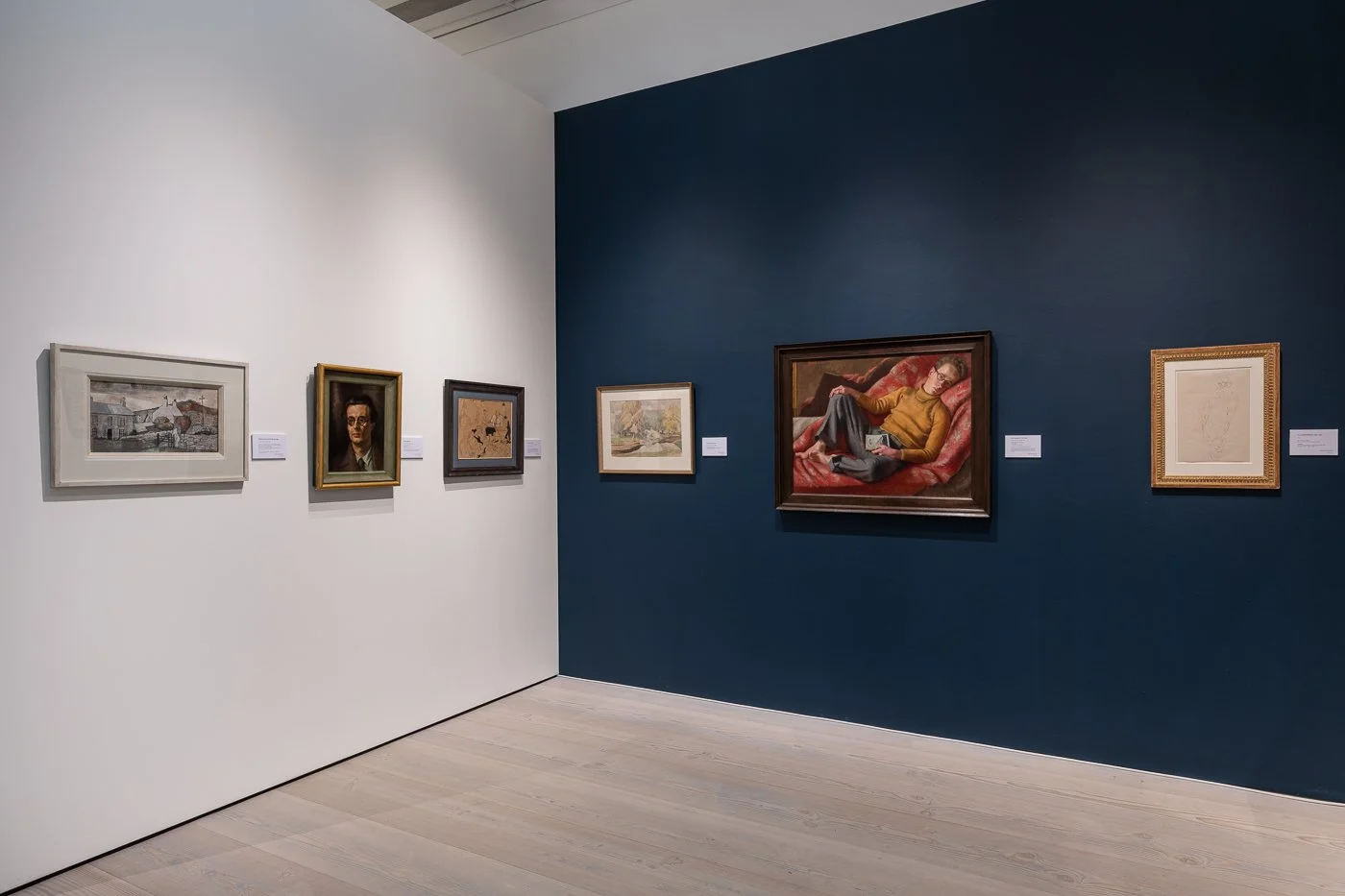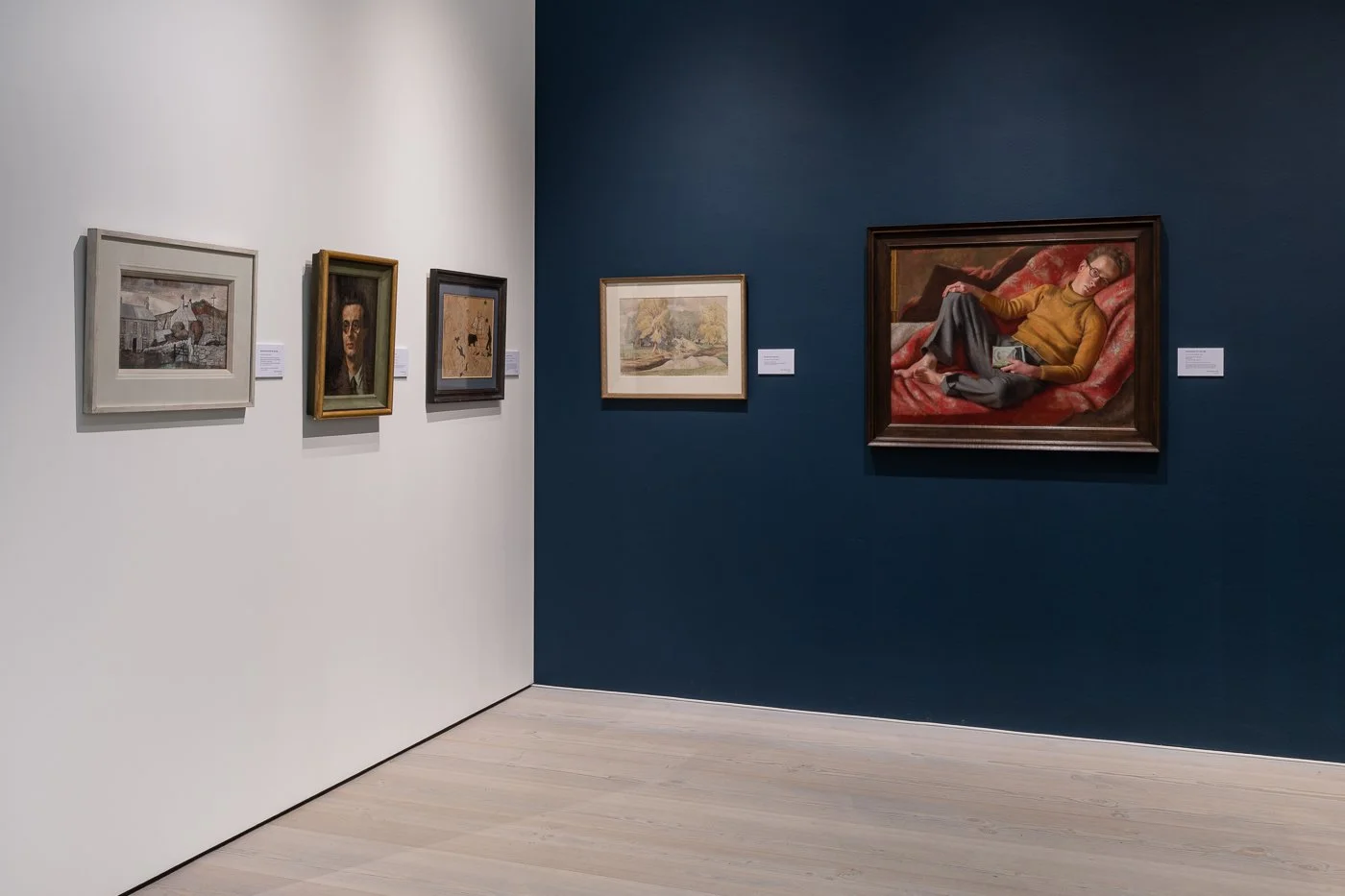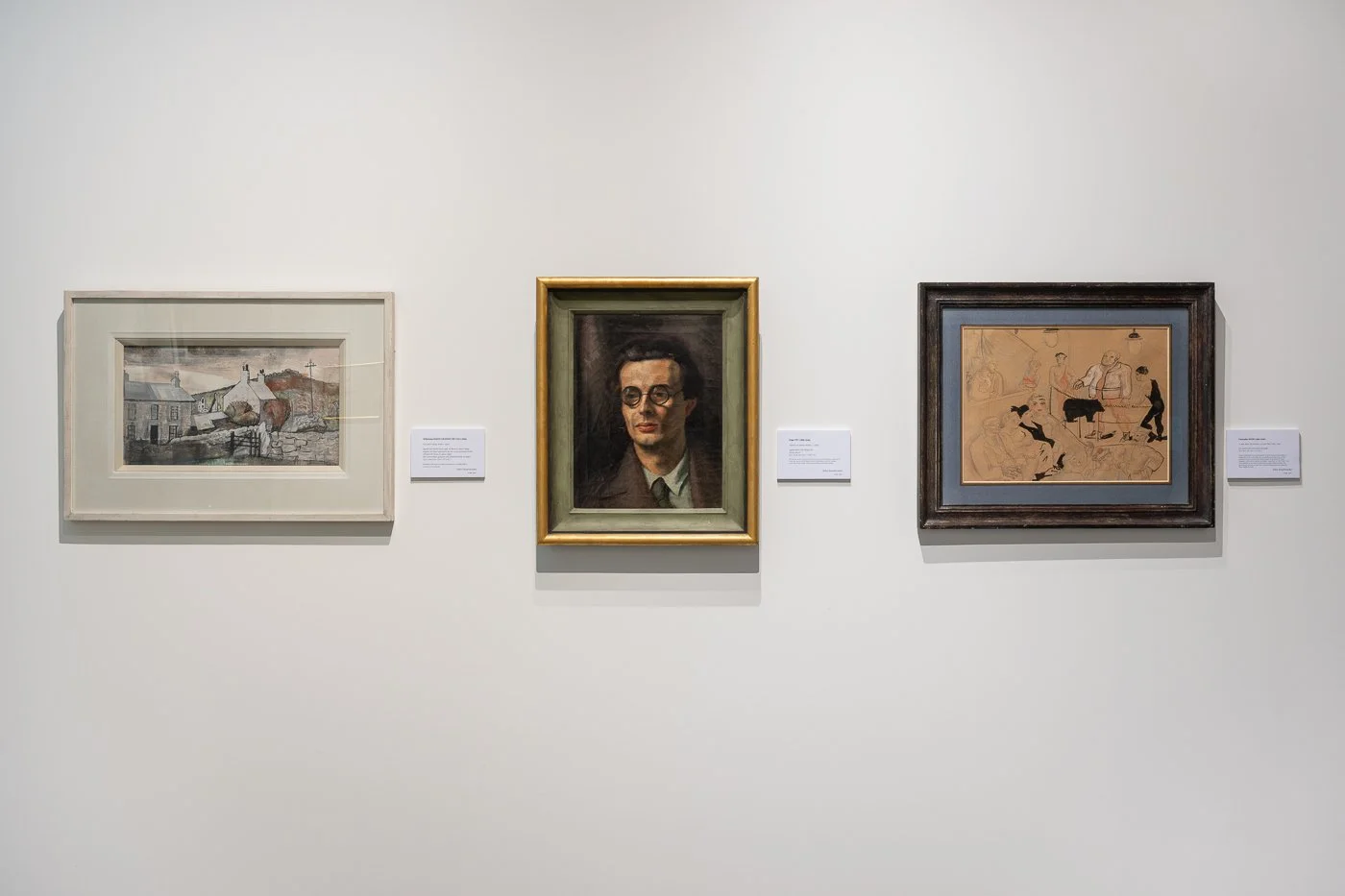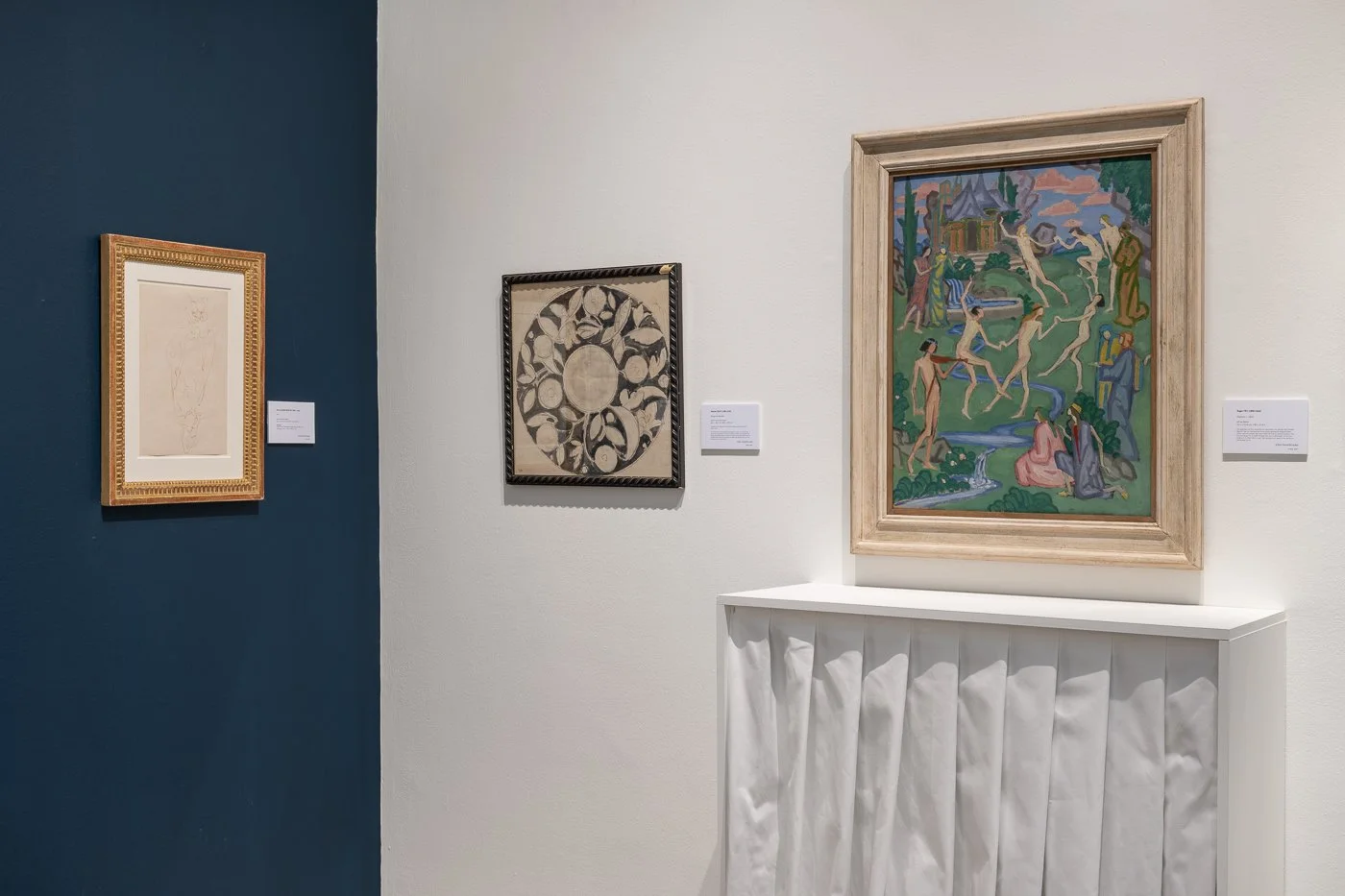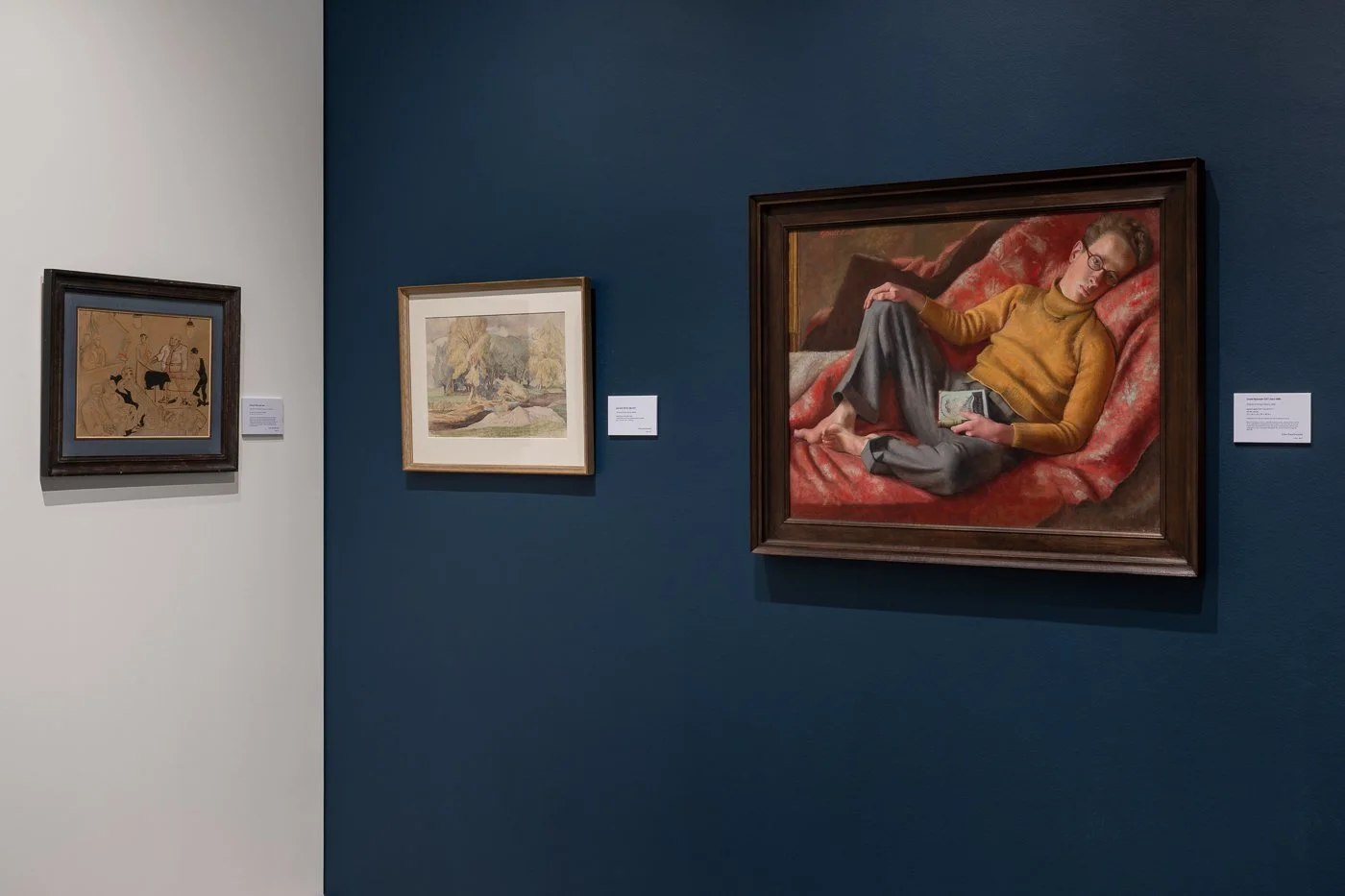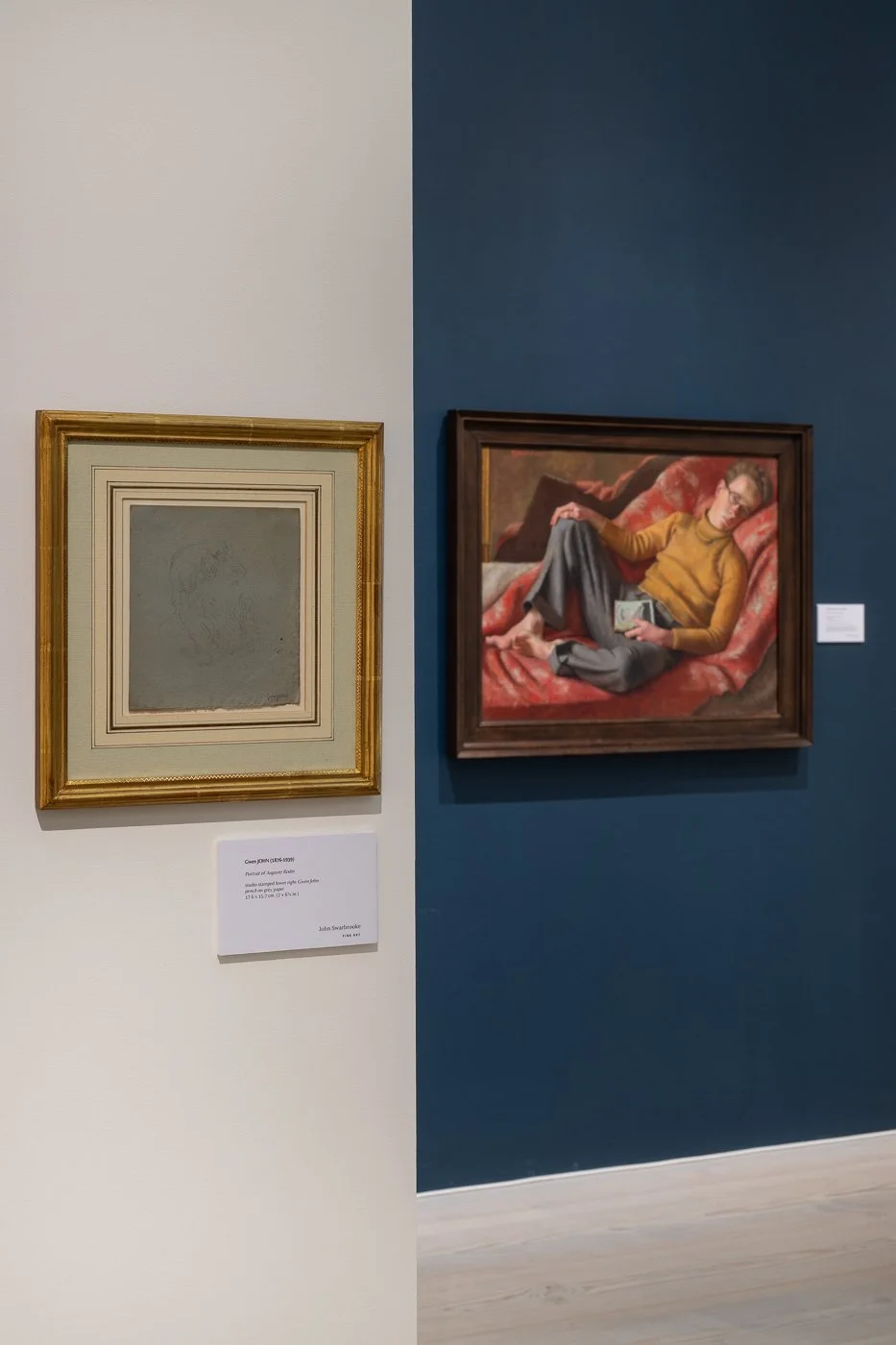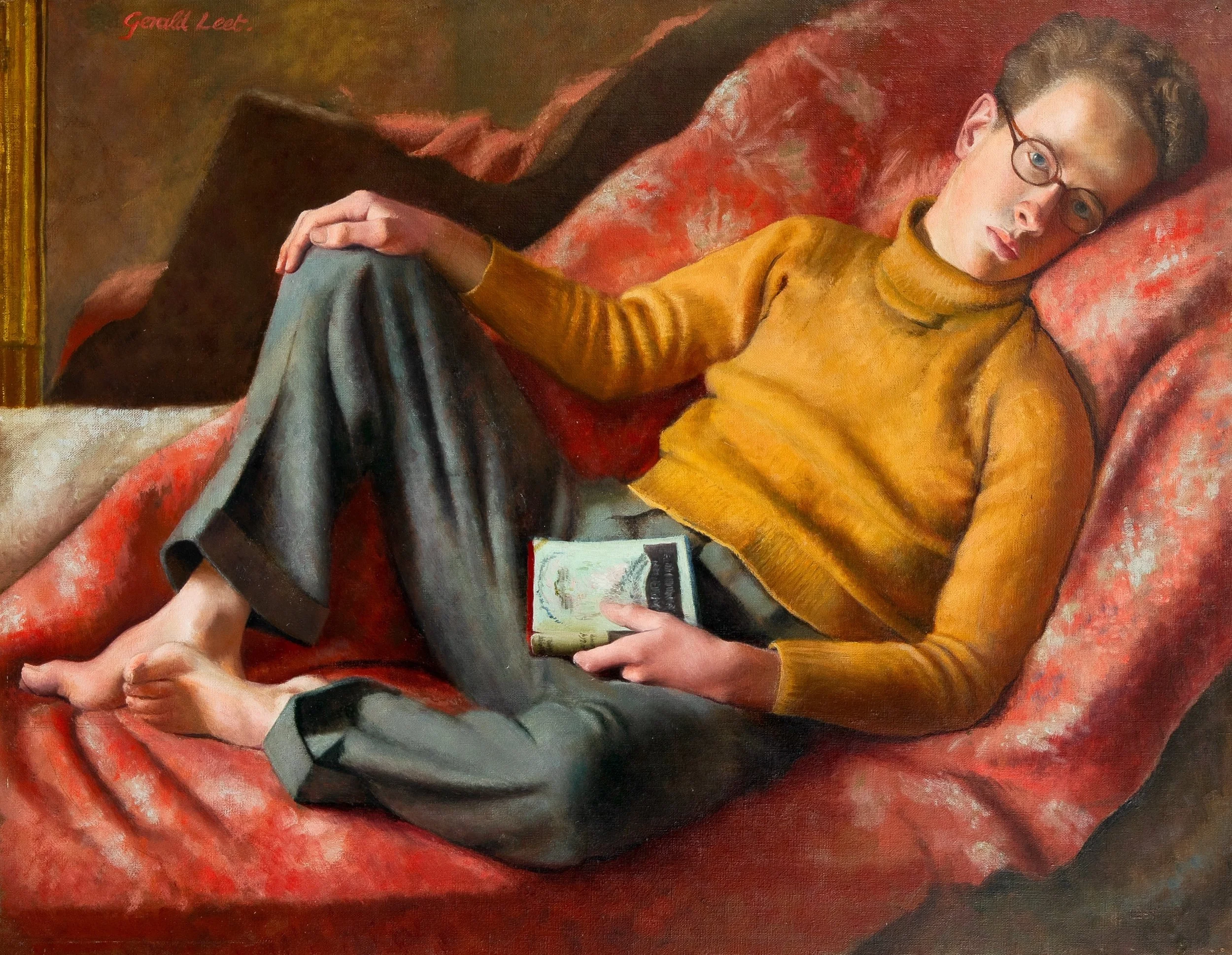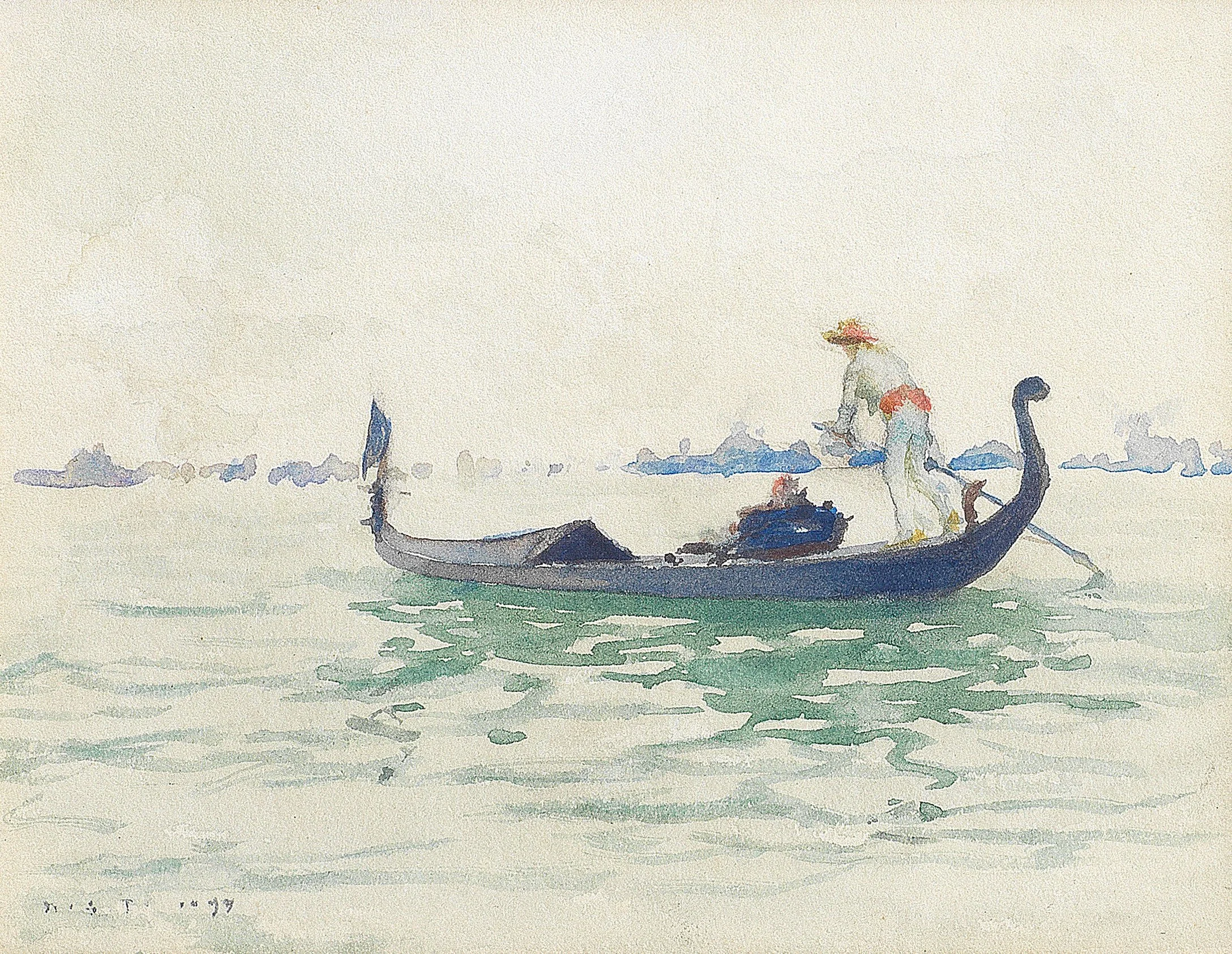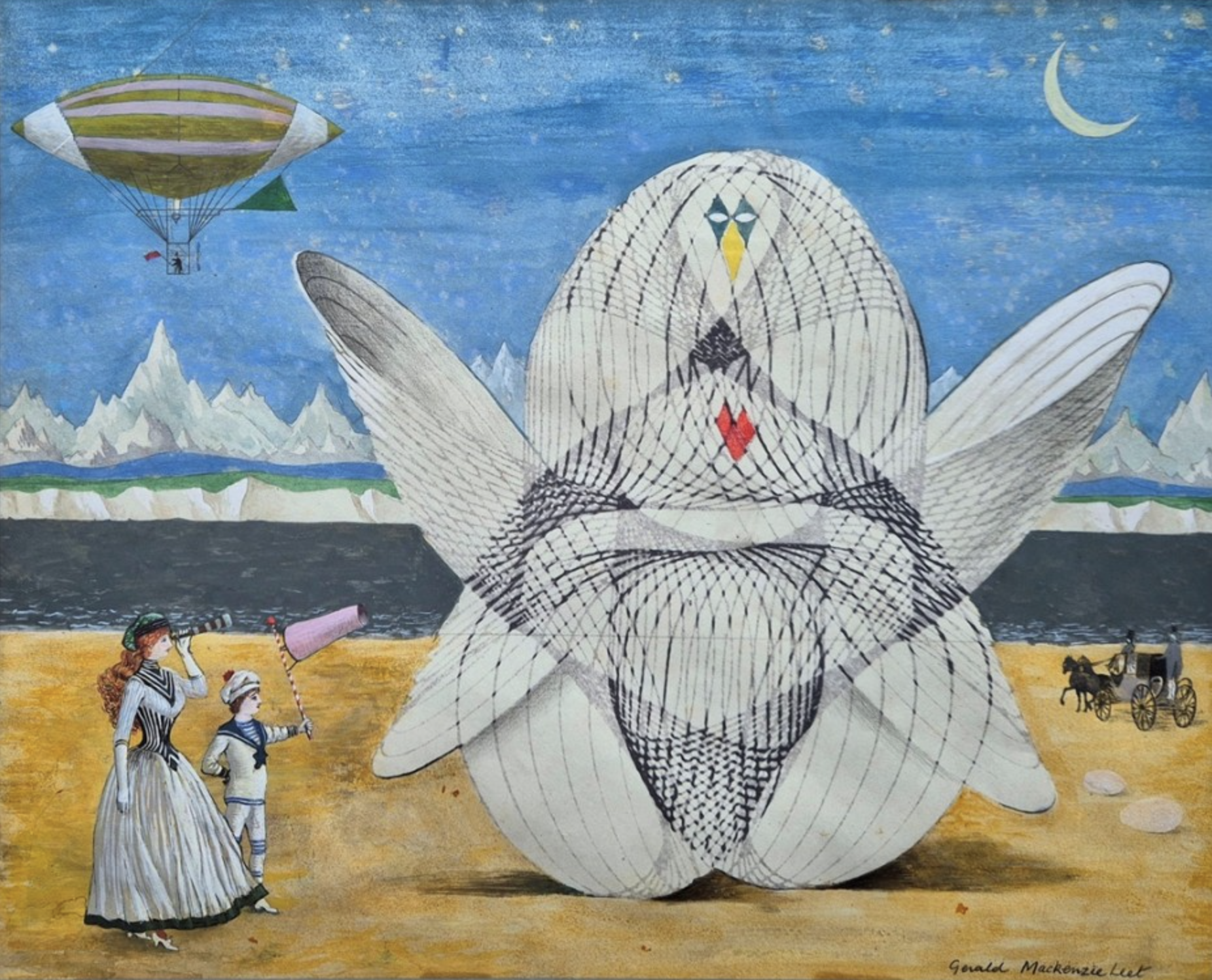John Swarbrooke Fine Art is delighted to return to the British Art Fair (Stand 50) from 25-28 September (Preview 25 September)
The curated exhibition will include paintings and works on paper by pioneering 20th-century artists such as Roger Fry, Gwen John, John Nash and Christopher Wood.
The gallery will also participate in Unsung, an exhibition at the fair curated by Colin Gleadell which highlights modern British artists whose work has been overlooked. Included is a self portrait by Denton Welch (1915-1948) ahead of the gallery’s solo exhibition of his work in October.
To enquire about an artwork or request fair tickets please email art@johnswarbrooke.com.
Gerald Mackenzie LEET (1913-1998)
Portrait of Denton Welch, 1935
signed upper left Gerald Leet
oil on canvas
71 x 91.5 cm. (28 x 36 in.)
Provenance:
Denton Welch; and thence by descent.
Private Collection, UK.
Literature:
The Exhibition of the Royal Academy of Arts MCMXXXV (London, 1935), p. 51, no. 786.
‘LET ME HAVE MY SHOES, PLEASE. I WANT TO GO HOME’, Punch, 15 May 1935, p. 575.
J. Methuen Campbell, Denton Welch: Writer and Artist, London, 2002, p. 107 (illus. in colour; also on frontispiece).
Exhibited:
London, The Royal Academy of Arts, The Exhibition of the Royal Academy of Arts MCMXXXV, Summer 1935, no. 786.
Gerald Mackenzie Leet was celebrated for his portraits and draughtsmanship, and like Welch himself, is frequently associated with Neo-Romanticism. Leet taught at Ealing School of Art, and after spending the Second World War in South Africa and Egypt, eventually became an official war artist in New Delhi, after his skill was recognised by Lord Wavell, the Viceroy of India. After the war, Leet taught drawing at Eton under Wilfred Blunt, where he remained until 1949 when he worked part-time at Brighton College of Art. He nevertheless remained in Windsor, living in an apartment at the Castle where he painted a series of portraits of Queen Elizabeth and her staff, until the King died and she became The Queen Mother. Welch became friends with Leet when he studied art at Goldsmiths’ (1933–5), and they had a long and often tempestuous relationship. Leet appears in various forms in Welch’s writing: as Mark Lynch in A Voice Through a Cloud, Gerard Hope in ‘A Novel Fragment’ (A Last Sheaf, 1951), and as himself in ‘Sickert at St Peter’s’ (1935), which describes a formative visit to Walter Sickert along with the (uninvited) Leet.
This painting demonstrates all Leet’s celebrated skill at portraiture and fine observation. The eyes – one illuminated, one in shadow – look directly at the viewer with a combination of lazy familiarity and startling intensity. The atmosphere is both theatrical and intimate: Welch is depicted in a state of charged languor, lying bare-footed on a patterned red blanket in front of a large, gilded mirror, and wearing a mustard-yellow roll-neck. The book is an especially revealing prop: a volume from the Collins edition of The Works of Oscar Wilde, with a cover by Donia Nachshen, it subtly encodes the painting’s sexuality and celebration of idleness. The painting gains added poignancy from the fact that Welch’s life-changing accident occurred later that same year. The painting stands as an elegy for the beauty of male youth soon to be irreversibly injured, as well a testament to art’s capacity to resist the felt velocity of demise.
Wilhelmina BARNS-GRAHAM CBE (1912-2004)
Gurnard's Head, Winter, 1949
signed and dated lower right W Barns Graham 1949; signed, inscribed and dated on the verso Gurnards Head, (Winter)/W Barns Graham 1949
ink, watercolour, gouache and coloured chalk on paper
24.7 x 44.4 cm. (9¾ x 17½ in.)
Provenance:
Gordon Hepworth Fine Art, Exeter.
with Belgrave Gallery, London.
Anonymous sale; Christie's, South Kensington, 13 June 1997, lot 392.
Porthmeor Gallery, St Ives.
Lord Myners (Former Chairman of the Trustees of Tate).
His estate sale; Christie’s, London, 17 Oct. 2024, lot 102.
Private Collection, UK.
Exhibited:
St Ives, Castle Inn, St Ives Society of Artists: Winter Collection, January 1949.
Penzance, Scottish Arts Council, Newlyn Art Gallery, Wilhelmina Barns-Graham: Retrospective 1940-1989, June - July 1989, no. 11; this exhibition travelled to Edinburgh, City Art Centre, October - November 1989; Perth, Museum and Art Gallery, December 1989 - January 1990; St Andrews, Crawford Art Centre, January - February 1990; and Ayr, Maclaurin Art Gallery, May 1990.
After studying at Edinburgh College of Art (1932-37), Barns-Graham moved to Cornwall on the recommendation of her college principal in 1940. This was partly due to health reasons, partly because of the relative safety of St. Ives during the war, and partly because of a thriving community of artists: Barbara Hepworth, Ben Nicholson, Naum and Miriam Gabo, Margaret Mellis and Adrian Stokes, Bernard Leach, and Alfred Wallis. ‘Gurnard’s Head’, a seventeenth-century Inn located near a promontory of the same name, north of Porthmeor and west of St. Ives, was very popular amongst St. Ives artists. The name, it is said, comes from the similarity between the headland and the head of a gurnard fish.
When Barns-Graham arrived in Cornwall, she was surprised at the similarity of the landscape with that of St. Andrews, where she was born. The granite palette here reflects that affinity, as well as the influence of Wallis: ‘Yes, I think Alfred Wallis’ greys and greens spoke to me,’ Barns-Graham would recall, ‘and did have a big impact on me because they were true’. In 1949, ‘truth’ was inextricable from war-time austerity; during the war, artists had been restricted from going outside to paint, and Barns-Graham turned instead to portraits and interiors (she also volunteered as an air-raid warden and made camouflage nets.) The brooding intensity of the painting’s tone reflects this period, as does the depiction of ruined buildings and telegraph wires. Such an atmosphere contrasts with the romanticism of Barns-Graham’s earlier landscapes of Cornwall, reflecting her increasing interest in industrial architecture, abstraction, and post-pastoral landscapes.
In May 1949, Barns-Graham made a decisive visit to Switzerland that would change her painting forever. The glaciers of the Grindelwald Glacier introduced a greater abstraction and experimental quality to her work as well as a fascination with the alchemical play of colour, light and line. The glass and Perspex sculptures of Naum Gabo further developed a fascination with the complexity of angles and points of view. Hints of this momentous shift are already evident here: as well as the almost flat, planar composition of pictorial elements, the blue-grey colours of the stone are both subdued and full of latent energy. The placement of the ruined skeletal building not only intensifies a sense of post-war ruination, but hints at the kind of inside-out perspectives that characterise the Glacial paintings (and influence of Gabo). The date – Winter 1949 – places the work right at the cusp of this momentous shift in Barns-Graham’s career, and in the history of British twentieth-century painting.
Roger FRY (1866-1934)
Portrait of Aldous Huxley, c. 1931
signed lower left Roger Fry
oil on canvas
42 x 31.4 cm. (12¼ x 16½ in.)
Provenance:
Private collection, U.K.
Philip Mould & Company, London, 2017, acquired from the above.
Private collection, U.K., acquired from the above;
Their estate sale; Warrington and Northwich Auctions, 4 February 2025, lot 2044.
Private Collection, UK.
Literature:
Frances Spalding, (1999) Roger Fry Art and Life, Berkeley and California, p. 252.
The present work was painted over a period of several months at the end of 1931, the year in which Aldous Huxley (1894-1963) wrote his seminal work, Brave New World, which brought him international acclaim.
Aldous Huxley first became affiliated with the Bloomsbury Group during the First World War, while working as a farm labourer at Garsington Manor, the home of Lady Ottoline Morrell (1873-1938). The similarity between the present work and that of the same sitter by Vanessa Bell in the National Portrait Gallery suggests that they were both painted during the same sitting, with the two artists working side by side.
Duncan GRANT (1885-1978)
Design for Roundel
pencil and watercolour
46.5 x 46.5 cm. (18¼ x 18¼ in.)
Provenance:
Robert Kime.
His estate sale; Dreweatts, Newbury, 4 Oct. 2023, lot 103.
Private Collection, London.
Grant's interest in the decorative arts began very early in his career and became an integral part of his artistic output. In 1913, he co-founded The Omega Workshops along with Roger Fry and Vanessa Bell with the aim of breaking down the barriers between so-called fine and decorative art and bringing art into everyday life. So began Grant's long association with design and decoration. As well as fuelling the imagination, Omega provided an alternative source of income for many artists of the day, particularly fellow members of the Bloomsbury Group, including Virginia Woolf, Clive Bell and Ethel Sands. Omega produced a wide range individually designed and produced items ranging from furniture, ceramics, murals, stained glass and textiles.
Roger FRY (1866-1934)
Dancers, c. 1910
oil on board
71.1 x 55.9 cm. (28 x 22 in.)
Provenance:
Lady Ottoline Morrell;
Sotheby’s, London, 19 Nov. 1980, lot 116;
Christie’s, London, 13 Nov. 1987, lot 245;
Sandra Lummis Fine Art, London;
Bernard Kelly, Nov. 1987.
His estate sale; Lyon & Turnbull, London, 15 Jan. 2025, lot 219.
Private Collection.
Dancers is an early modernist painting made at the advent of Post-Impressionist art in Britain. Roger Fry distinguished himself as both an intellectual and a painter, and these two activities were inseparably connected throughout his life. This work was painted around the time that Fry curated the fêted exhibition Manet and the Post-Impressionists, held at the Grafton Galleries in London, which provoked a public outcry and created a new taxonomy of modernist painting. Having previously worked in a temperate, well-constructed style of naturalistic painting informed by his deep familiarity with old master painting from Giotto to Rembrandt, Fry’s style began to change following his first exposure to Cezanne in 1906. His painting Dancers uses an eclectic mixture of avant-garde tropes—in its radical simplification of detail, its irreverent subject-matter, its flamboyant palette of pure colour—and the traditions of history painting – in its multi-figure composition, its historicist costumes, its allusions to myth or ritual.
Dancers may be construed as Fry’s attempt to develop a new form of painting inspired partly by the art of Henri Matisse. Matisse’s masterpiece La Danse was exhibited at the Salon d’Automne in Paris in autumn 1910, shortly before Manet and the Post-Impressionists opened in November that year. Fry later included it in the Second Post-Impressionist Exhibition, a sequel that was also held at the Grafton Galleries.[1] The interlocking chains of naked, sensual figures have an immediate, superficial similarity to the subject of Fry’s painting. Fry’s admiration for Matisse is evident from his selection for the two Post-Impressionist exhibitions: two landscape paintings, nine sculptures and twelve drawings by Matisse were included in Manet and the Post-Impressionists, some of which were borrowed from the artist directly; as many as forty works by Matisse were included in the Second Post-Impressionist Exhibition. The execution of Dancers also strongly suggests an interpretation of Matisse. The paint was applied with flat touches in sharply defined, contrasting areas of colour. The emphasis was upon producing a decorative, uniform surface, rather than the modelling of figures or painterly structure. Fry wrote of Matisse in the catalogue for the Second Post Impressionist Exhibition: ‘In opposition to Picasso, who is pre-eminently plastic, Matisse aims at convincing us of the reality of his forms by the continuity and flow of rhythmic line, by the logic of his space relations, and, above all, by an entirely new use of colour.’[2] Fry’s analysis of Matisse’s work and his own painting experiment in Dancers suggest a conscious effort to develop his own original, modernist style with Matisse as a point of departure.
This painting was first owned by the charismatic arts patron Lady Ottoline Morrell. She was initiated into avant-garde painting by Augustus John, whose work she bought and with whom she had an unusual romance. She first met Roger Fry in 1909. Writing that year to the keeper of the Tate Gallery, D. S. MacColl, Fry said: ‘She has been very good to me and has a real feeling for art.’[4] They were both central to the establishment of the Contemporary Art Society in 1910, and Lady Ottoline acted as the Society’s buyer in its early years. In February 1911, Fry painted Lady Ottoline’s portrait at Peppard, her house near Henley-on Thames. Their friendship intensified and, when Fry paid a visit to her home in Bedford Square in March 1911, they had a sexual encounter. Fry wrote to her afterwards: ‘I’m still all amazed and wondering … can’t begin to think—I can only know how beautiful it was of you, how splendid—[…] it was altogether beautiful and right.’[5] By May that year, Fry had taken against Lady Ottoline and a lasting enmity was established between them; he believed that she had spread a rumour that he was in love with her.[6] It seems likely that Fry’s painting Dancers was purchased by Lady Ottoline sometime before their quarrel in May 1911. It remained in her possession, part of a significant collection of modern British pictures, and was sold by her descendants through Sotheby’s in 1980.
John NASH CBE RA (1893-1977)
The Roach Pool at Wiston, Suffolk
signed lower left John Nash
watercolour, pencil and coloured pencil on paper
33.5 x 48 cm. (13¼ x 18⅞ in.)
Provenance:
Sale; Bonhams, Knightsbridge, 22 Jan. 2008, lot 108.
Private Collection, U.K.
Sale; Bonham’s, Knightsbridge, 29 Nov. 2023, lot 2.
Private Collection, UK.
John Nash would often describe his interests as ‘gardening, fishing and painting – in that order’. Like Cedric Morris, a close friend and neighbour in Suffolk, he was to his bones an ‘artist plantsman’. Nash’s fine observational acuity here combines with an ethereal delicacy and introspective calm. This is created by its sensitive balance of composition, colour, and style: the quiet ecstasy of the upward arc of the left-hand tree is balanced by the melancholy droop of the grass, reeds, and trunks. Lush, verdant greens and watery blues of the pond and shade are balanced by the warmer tones of the grass, trunks and yellower leaves of the trees. Two trunks frame the entire scene. The regular lines of the grass and reeds merge into those of the trees, creating a delicate lattice effect, filtering light and shade from the banks of the pool to the underside of the trees. These defining marks create a kind of rhythm for the eye, and hint at the kind of abstraction characteristic of Paul Nash’s more overtly surrealist works – John’s older brother. The central mysterious structure – possibly a fishing shelter – camouflaged amongst the bushes introduces an enigmatic focal point. It is typical of Nash’s interest in subtle incursions of the man-made into the natural world.
Henri GAUDIER-BRZESKA (1891 – 1915)
Owl
pen and ink on paper
34.5 x 27.5 cm. (13 9/16 x 10 13/16 in.)
Provenance:
The artist Barry Flanagan (b. 1941).
Private Collection.
Anon. sale; Bonham’s Knightsbridge, 29 Nov. 2023, lot 165.
Private Collection, acquired at the above sale.
When he died in battle at Neuville St. Vaast on 5th June 1915 aged 23, Henri Gaudier-Brzeska left behind an already extraordinary body of work, the promise of which only reinforces the tragedy of his untimely death. This drawing, where every line possesses an adrenalizing conviction, demonstrates much of that nascent potential: talons grip the branch with resolute precision, the face fixes the viewer with uncompromising severity. It is part of Brzeska’s skill as an animalier that, whilst filled with expressive power and energic beauty, his animals are rarely naively anthropomorphised. This dynamism depends as much on what is left out as what is included. Jim Ede – an early champion and significant collector of Brzeska– describes the ease with which his draughtsmanship controls the space of the page: ‘Because a hoof or a tail touches the edge, and a hat sails past unhindered, it must mean that he has a complete control of his space – as a good motorist has of the width of his car.’
Christopher WOOD (1901-1930)
A Side Show Performance at Luna Park, Paris, 1930
ink, pastel and watercolour on paper
33 x 44.5 cm. (13 x 17½ in.)
Provenance:
Mercury Gallery, London, 1979;
Mr. and Mrs. Nicholas Fewtrell, UK (acquired from the above), until 2017.
Private Collection, UK.
This enigmatic work is by Christopher Wood, one of the most celebrated yet tragic artists of the 20th Century.
In late-1929 Wood was commissioned by Boris Kochno (1904-1990) to design the set for a new ballet he was producing. Kochno had recently assumed creative control of the Ballet Russes on the death of Serge Diaghilev (1872-1929), and his new ballet, ‘Luna Park’ or ‘The Freaks’, was to be debuted at the 1930 Cochran Revue at the London Pavilion. The performance was set at Luna Park, a real-life amusement attraction near Porte Maillot in Paris, and tells the story of a group of circus ‘freaks’ – including a six-armed man and one-legged ballerina - who rebel against the ringmaster when he is off-stage.
The present work depicts a wrestling match and is one of a small number of drawings and watercolours painted in preparation for the prestigious Luna Park commission. It was painted at the amusement park in Paris from which the ballet took its inspiration - presumably in the famous sports arena which would often host high-profile boxing matches. As the opponent in black enters the ring, the ringmaster – who may also be one of the circus ‘strongmen’ - addresses the spectators in the bottom left, who Wood depicts in his characteristically shrewd, direct manner. The other spectators, however, are treated in an altogether more sympathetic way – especially the young men who all cut fine figures with strong, angular jawlines and delicate facial features. It is remarkable example of Wood’s ability to capture a broad range of human character and emotion in a limited palette, and like many of his works at this date, has a harmonious but inexplicably uncomfortable composition.
Gwen JOHN (1876-1939)
Portrait of Auguste Rodin
studio stamped lower right Gwen John
pencil on grey paper
17.6 x 15.7 cm. (7 x 6¼ in.)
Provenance:
Anthony D'Offay, London.
Private Collection.
Gwen John met Auguste Rodin when modelling for a sculpture commissioned to commemorate Whistler in 1904. She became his lover and their relationship lasted for a decade. Here, however, Rodin is the model. The drawing appears at first unusually formal, almost classical in its restrained use of line, absence of shading, and depiction of a statuesque bust in profile. Closer inspection reveals subtle touches characteristic of John’s work: the tender restraint of the curl and fall of the hair, the exquisite delicacy of the fold of the collar. The piercing transcendence of Rodin’s eye – at once fierce and vulnerable – provides a single captivating introspective detail.
Duncan GRANT (1885-1978)
Harp Player, c. 1930
signed lower left DG
ink on paper
19 x 15 cm. (7½ x 5¾ in.)
Provenance:
The Bloomsbury Workshop, London.
Private Collection.
This ink and wash depiction of a harpist is especially satisfying in composition and execution: the instrument’s triangulation contrasts with the organic dynamism of the human body. Strong vertical lines of the strings further contrast with the finer freer lines of the human form. The figure, almost disproportionately large, create a kind of emblematic, almost mythic importance modified by the dignified tenderness of the facial expression.
In 1932, Grant joined Vanessa Bell in decorating the Music Room at the Lefevre Gallery. Writer and critic Cyril Connolly recalled the event and the performance of one particular harpist: ‘At the inauguration, the room vibrated to a Debussy solo on the harp, and the music, with its seasonal elegiac, seemed to blend with the surrounding patterns of flowers and falling leaves in a rare union of intellect and imagination, colour and sound, which produced in the listener a momentary apprehension of the life of the spirit, that lovely and un-English credo.’
Henry Scott Tuke, RA, RWS (British, 1858-1929)
A Venetian gondola
signed with initials and dated lower left H.S.T. 1899
watercolour on paper
10.5 x 13.5cm (4 1/8 x 5 5/16in).
Provenance:
B. C. Sarginson.
Brian D. Price, purchased on 27 March 1983 (R315).
Sale; Bonham’s, 27 Sept. 2023, lot 91.
Exhibited:
Falmouth, Royal Cornwall Polytechnic Society, no. A502.
Literature:
David Wainwright & Catherine Dinn, Henry Scott Tuke 1858–1929: Under Canvas, London, 1989, p. 82, no. 59 (illus.)
Gerald Mackenzie LEET (1913-1998)
Figures and Dirigible in an Icy Landscape
signed lower right Gerald Mackenzie Leet
gouache, pen and pencil on paper
30.5 x 37 cm. (12 x 14.6 in.)
A dirigible flies over a glacial sea, carrying a man waving a red flag. Below stand an Edwardian or late- Victorian woman, with long pre-Raphaelite red hair, and a boy in a sailor’s suit. She looks through a telescope at a distant object, he holds a windsock in flying in parallel. Like Leet’s portrait of Denton Welch (1935), this painting demonstrates all his celebrated skill at fine observation and draughtsmanship. However, the subject is more obviously influenced by surrealism. Late-Victorian clothes and modes of transport are set against a background straight out of the northern renaissance, whilst the central mysterious object is composed of geometric interlacing lines, oddly personified by blue sequin-like eyes and yellow nose. Fantastic collisions of people and place, archaism and innovation, are here rendered with an illustrative precision characteristic of Leet’s remarkably exacting imagination.

